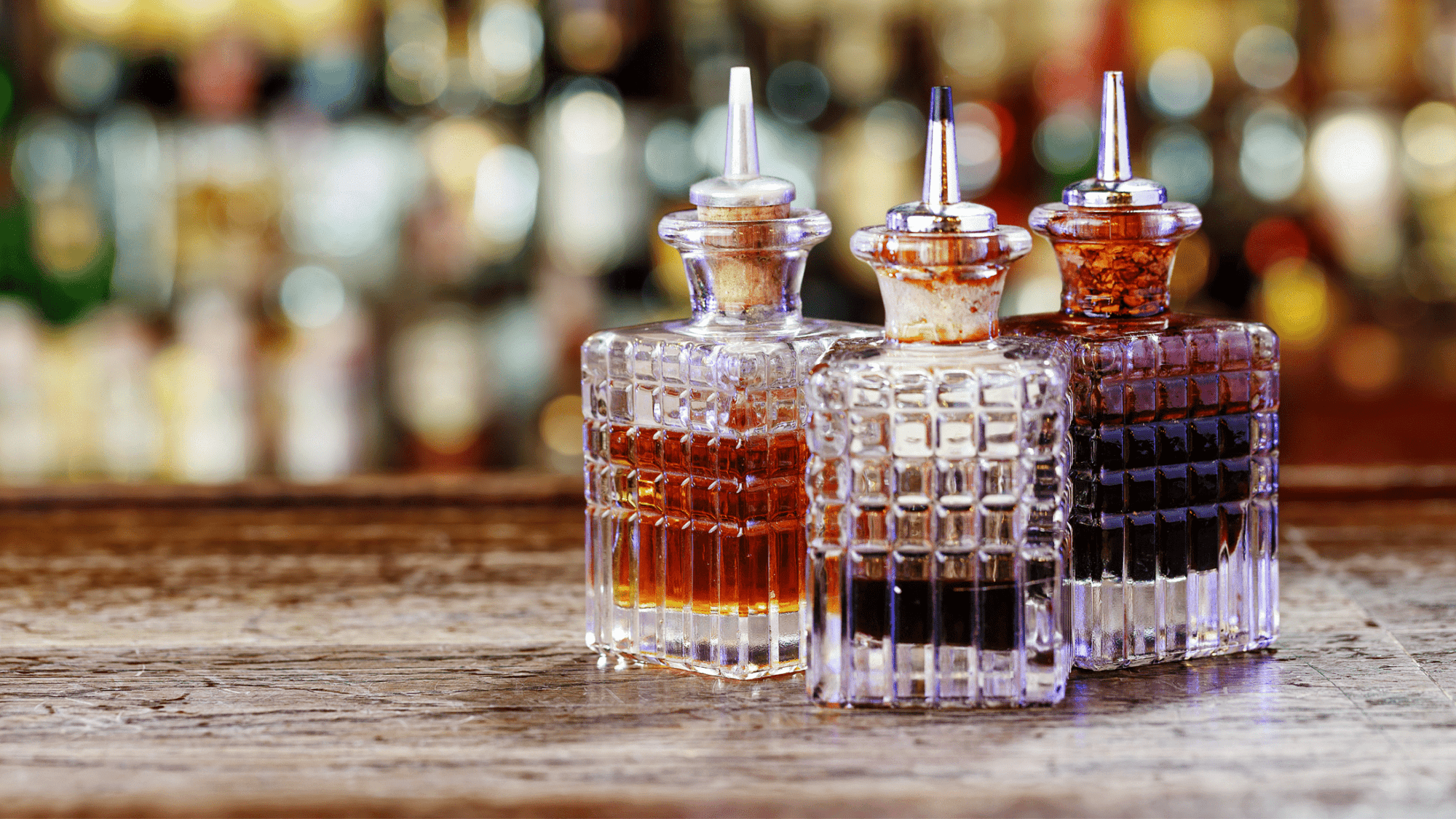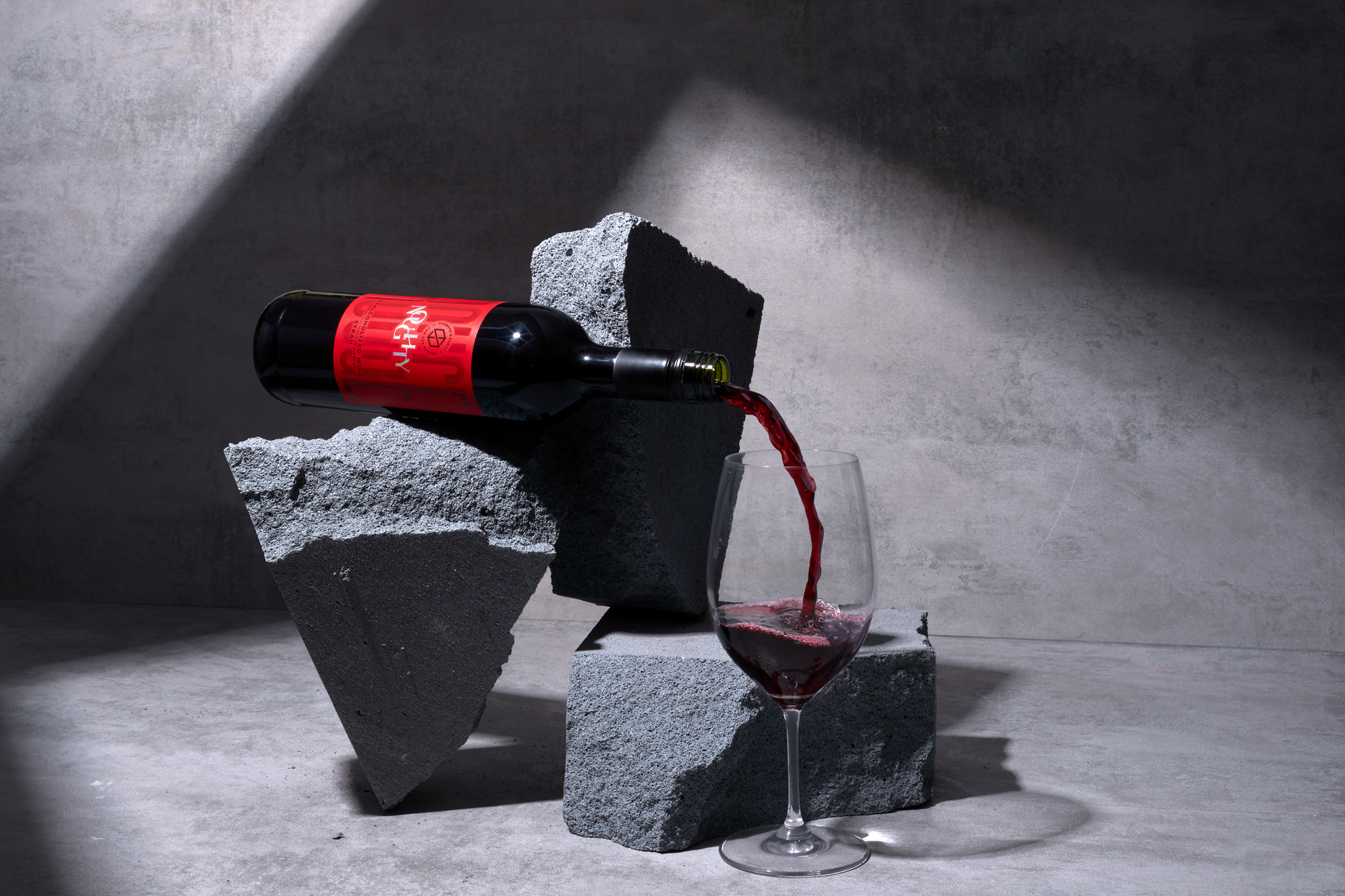Bitters: the quintessential cocktail ingredient. You only need a couple of drops to add complex flavor and health benefits to any beverage. Go into any craft cocktail bar, and you’ll see more than one type of bitters lining the shelves. But what exactly are bitters? Why are they called that? And can you use bitters in alcohol-free creations?
Here’s what you need to know.
What are bitters?
The small container you’ll find in almost every bar is a spirit made with herbs and spices used in cocktails to add depth of flavor with only a few drops. The most common botanicals are aromatic herbs, bark, roots, and fruit infused into a flavorless alcohol base. The alcohol is a solvent, extracting flavors and aromatics from the botanicals. How long the steeping takes place depends on the recipe.
Bitters don’t actually have to taste bitter. They do taste strong and sharp due to the botanicals and the high tannin levels. Some do have a more bitter flavor, while others are sweeter and spicier.
Because bitters have a high concentration of healthy herbs, roots, and spices, they may aid digestion, liver health, and detoxification. They could even help to control sugar cravings and nutrition absorption.
Who discovered bitters?

The earliest mention of bitters was in 1806 when a recipe for a cocktail was printed, “a stimulating liquor, composed of spirits of any kind, sugar, water, and bitters.”
Angostura bitters were one of the original bitters, but they weren’t created for cocktails. They were originally made to aid digestion and malaria in Venezuela in the 1800s. A German physician created this remedy and named it after the town Angostura (now known as Cuidad Bolívar) in Venezuela.
During the late 1800s bitters were everywhere. No longer used for health reasons, most cocktail recipes included bitters. Even teetotalers who didn’t drink alcohol would consume the mixture.
Leading up to Prohibition, bitters were the flavor du jour. Unfortunately, many of the unique bitters recipes and products were lost.
Bitters have made a roaring comeback today though. You can find dozens of different flavors and fanciful craft cocktail creations at almost every bar you look.
But it’s alcoholic?
Yes and no. Technically a bottle of bitters has 35-65% alcohol, but because you only need a couple of drops per beverage, the actual alcohol added is barely, if not at all, traceable. In many cases, bitters are marketed as alcohol-free.
Legally speaking, if a beverage has less than 0.5 percent alcohol it can be marketed as alcohol-free. Bananas, orange juice, and kombucha have trace amounts of alcohol. Vanilla extract is made with alcohol in many cases but it’s so diluted in baking, it’s not considered alcohol.
So if you’re looking to use bitters in a nonalcoholic beverage, here’s how to make sure it stays (legally) alcohol-free.
- Mix 2 dashes of bitters into at least 5 ounces of a drink
- If the drink is fewer than 5 ounces, use less bitters.
- Consider using alcohol-free bitters.
Nonalcoholic bitters

It’s not difficult to find delicious alcohol-free bitters. They’ve been used for mocktails, tinctures, and medicines for decades. Nonalcoholic bitters use a different base, usually vegetable glycerine, vinegar, or a combination to infuse their product with flavor. The result is a strong aromatic flavor with not even trace amounts of alcohol.
The most popular bitters
There are more than one type of bitters to choose from—and it can get confusing fast. Here are the most popular flavors and the recipes they’re in.
Angostura Bitters
The first type of bitters hail from Venezuela. They’re still the most popular bitters on the market today. Allegedly only five people know the recipe that’s—also allegedly—made with over 40 ingredients sourced from England and produced in Trinidad. The result is a highly concentrated product used in Old Fashioneds, Manhattans, and many other classics.
Peychaud’s Bitters
With a rounder, gentler flavor than Angostura, Peychaud’s Bitters are slightly sweet and floral with strong licorice notes from the anise. Peychaud also has a long medicinal history. Created by an apothecary in New Orleans in the 1830s, he soon developed a second career as a mixologist. He’s credited with the Southern classic, the Sazerac—an absinthe and bourbon cocktail highlighting his bitters.
Orange Bitters
Orange bitters are sweet—for bitters, which really doesn’t mean much. With a citrusy flavor and a rich spicy aftertaste, they pair exceptionally with white alcohol like vodka and gin. They date back to the 1860s and ‘70s and were included in original recipes for the Dry Martini. Unlike Peychaud and Angostura, there are many different brands to choose from. See below for our favorite bitter brands.
Other Bitters
Bitters come in all different flavors, from the more traditional flavors to rhubarb, plum, mint, chocolate, celery, and caraway—you have plenty of choices when it comes to bitters and creating your own craft cocktail!
Our favorite bitters brands

We love mixing a good cocktail, so rest assured we have you covered in the bitters department. Here are recommended bitters. Some are made with alcohol, others with glycerine.
Bennett Bitters
These small batched, organic bitters are made in New York City. Choose from classic bitters that harken the golden age of aromatics or bitters that aim to bewitch your taste buds with original recipes.
All the Bitter
Made exclusively with vegetable glycerin, apple cider vinegar, and botanicals like milk thistle seed, dandelion root, ginger, and holy basil, All the Bitter is a cocktail ingredient you can feel good about.
Hella Bitters
Hella bitters offer several flavor profiles to choose from. From classic aromatic to ginger, citrus, and Mexican spice, Hella bitters are known for creating a symphony of flavors that delight and surprise.
DRAM Bitters
DRAM loves intense bitters. Using a Cold Maceration process to steep strong plants like Wormwood, they have both glycerine and alcohol-based bitters to choose from with traditional and unique flavors.



